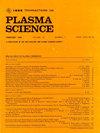Miniaturized Rotating Gliding Arc Plasma Source Utilizing an Improved ZVS Circuit With Adjustable Power and Frequency Control
IF 1.5
4区 物理与天体物理
Q3 PHYSICS, FLUIDS & PLASMAS
引用次数: 0
Abstract
Gliding arc plasma, characterized by high efficiency in generating reactive oxygen and nitrogen species (RONS) and large treatment area, has attracted growing interest in the plasma medicine research field. The power supply used to generate and sustain the gliding arc discharge process is a core component of the plasma source. High-voltage and high-frequency power supply based on Mazzilli’s zero voltage switching (ZVS) circuit have the significant advantages of simplicity, stability, and low cost. However, drawbacks such as heat generation in the drive circuit, limited voltage regulation range, and non-adjustable output frequency have restricted the application of Mazzilli’s ZVS circuit in plasma biomedical research. To overcome these shortcomings, an improved ZVS circuit was designed with power control and switch-capacitor array in this work. A compact rotating gliding arc plasma source was developed with adjustable power and frequency control. Its frequency range is 35–72.5 kHz and the power range is 50–200 W. Optical emission spectroscopy (OES) diagnostics indicate that the products of the proposed plasma source can be flexibly regulated. For instance, by fixing the power at 50 W and adjusting the frequency from 35 to 72.5 kHz, the emission intensity of OH increased by 39.7%. Besides, the plasma source can be powered by a lithium battery and weighs only 5 kg.利用改进的功率和频率可调ZVS电路的小型旋转滑动电弧等离子体源
滑翔电弧等离子体以其产生活性氧和活性氮效率高、治疗面积大等特点,引起了等离子医学研究领域的广泛关注。用于产生和维持滑动电弧放电过程的电源是等离子体源的核心部件。基于Mazzilli零电压开关(ZVS)电路的高压高频电源具有简单、稳定和低成本的显著优点。然而,驱动电路发热、电压调节范围有限、输出频率不可调等缺点限制了Mazzilli的ZVS电路在等离子体生物医学研究中的应用。为了克服这些缺点,本文设计了一种采用功率控制和开关电容阵列的改进ZVS电路。研制了一种功率可调、频率可调的小型旋转滑动电弧等离子体源。其频率范围为35-72.5 kHz,功率范围为50 - 200w。发射光谱(OES)分析结果表明,该等离子体源的产物可以灵活调节。例如,当功率为50 W,频率从35 kHz调整到72.5 kHz时,OH的发射强度提高了39.7%。此外,等离子体源可以由锂电池供电,重量仅为5公斤。
本文章由计算机程序翻译,如有差异,请以英文原文为准。
求助全文
约1分钟内获得全文
求助全文
来源期刊

IEEE Transactions on Plasma Science
物理-物理:流体与等离子体
CiteScore
3.00
自引率
20.00%
发文量
538
审稿时长
3.8 months
期刊介绍:
The scope covers all aspects of the theory and application of plasma science. It includes the following areas: magnetohydrodynamics; thermionics and plasma diodes; basic plasma phenomena; gaseous electronics; microwave/plasma interaction; electron, ion, and plasma sources; space plasmas; intense electron and ion beams; laser-plasma interactions; plasma diagnostics; plasma chemistry and processing; solid-state plasmas; plasma heating; plasma for controlled fusion research; high energy density plasmas; industrial/commercial applications of plasma physics; plasma waves and instabilities; and high power microwave and submillimeter wave generation.
 求助内容:
求助内容: 应助结果提醒方式:
应助结果提醒方式:


